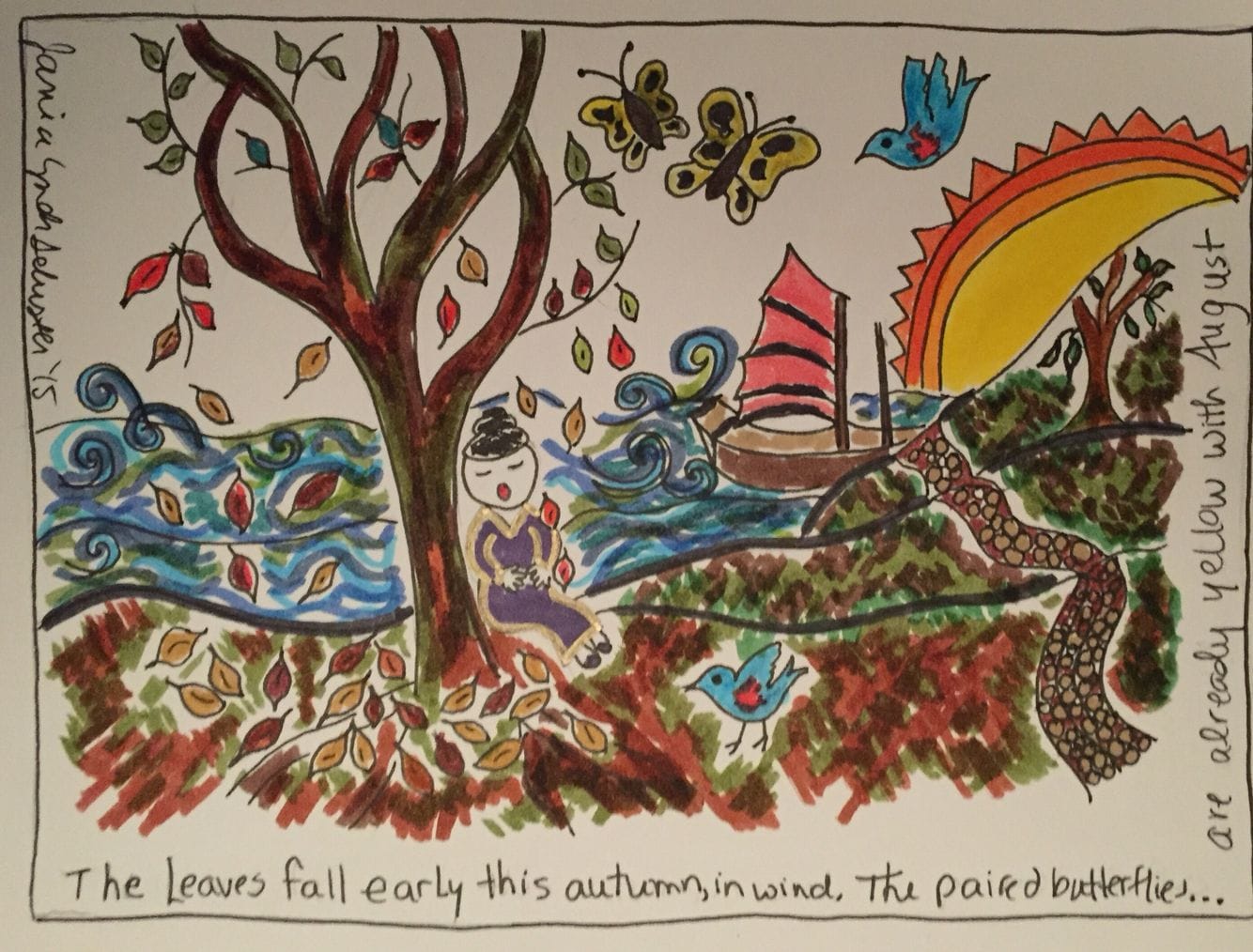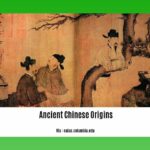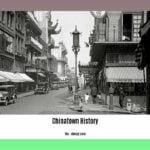Ezra Pound’s “The River-Merchant’s Wife: A Letter” stands as a powerful testament to the enduring nature of love and longing. More than a mere translation of Li Bai’s 8th-century Chinese poem, it’s a transformative interpretation, a poignant exploration of a young wife’s emotional journey in the face of her husband’s absence. This review delves into the poem’s depths, exploring its themes, imagery, and the impact of Pound’s modernist lens.
A Wife’s Evolving Emotions
The poem unfolds as a chronological narrative, charting the wife’s life from childhood innocence to the complex emotions of adulthood. We first encounter her as a shy child, “playing by the gate,” her world circumscribed by family and tradition. The arranged marriage at fourteen marks a pivotal shift, introducing the nuances of a developing relationship. At fifteen, a budding intimacy emerges, hinted at through shared laughter and playful gestures. However, the husband’s departure as a river merchant casts a long shadow, ushering in a period of profound loneliness. The final stanza culminates in an outpouring of intense yearning, a desperate plea for reunion underscored by the poignant image of “paired willows” symbolizing enduring connection.
Pound’s Poetic Craft
Pound’s masterful use of free verse allows the wife’s emotions to flow unconstrained by rigid structure, mirroring the natural cadence of thought and feeling. The poem is rich in evocative imagery: the flowing river suggests the relentless passage of time, while ripe plums and spreading moss hint at the wife’s journey from innocence to maturity. The lookout point becomes a poignant symbol of her yearning for connection with her absent husband. This vivid imagery, characteristic of Pound’s modernist style, paints a powerful picture of a woman wrestling with love tested by distance and time.
Li Bai’s Legacy, Pound’s Vision
While grounded in Li Bai’s original, Pound’s version takes significant liberties, shaping it to resonate with a 20th-century audience. The chronological narrative, largely absent in Li Bai’s poem, adds a layer of emotional depth, allowing readers to witness the wife’s transformation over time. Pound’s emphasis on vivid imagery, influenced by the Imagist movement, further distinguishes his interpretation. This creative reimagining sparks ongoing debate among scholars: is it a faithful adaptation or a poem in its own right? The question itself underscores the complexities of cross-cultural and cross-temporal artistic interpretation. Some experts believe the alterations are so substantial, it’s almost like a separate entity entirely. Others highlight the inherent difficulties in translating across languages and cultures as justification for Pound’s interpretation.
Enduring Resonance
“The River-Merchant’s Wife: A Letter” continues to captivate readers with its timeless themes of love, longing, and the passage of time. Its emotional honesty and universality transcend cultural boundaries, resonating with anyone who has experienced the pangs of separation. The poem’s enduring appeal lies in its ability to connect us with the deepest human emotions, reminding us that some experiences are truly timeless. It may even encourage you to explore more of Li Bai’s work, or other translations of this specific poem, [https://www.lolaapp.com/] to see how different interpretations offer unique perspectives. Discover the enchanting wisdom and inspiring the alchemist sayings that have captivated readers for generations. Embark on a captivating literary adventure with The True Confessions of Charlotte Doyle, a captivating tale that will transport you to a world of mystery and self-discovery.
Deeper Dive into Meaning
Unpacking the Poem’s Core
What is the meaning of “The River Merchants’ Wife”? The poem’s power lies in its emotional honesty, tapping into universal feelings of longing and the bittersweet passage of time. It also touches on the complexities of marriage and the challenges of separation, themes that resonate just as strongly today as they did centuries ago. It’s not just about romantic love but also the evolution of a relationship, from childhood innocence to the deeper, more complex emotions of adulthood marked by absence and longing. There is debate if it’s a commentary on the human condition—how we deal with separation and the passage of time, how we cling to memories, how we grow and change, even when apart. It offers a glimpse into the lives of women during that era—their societal roles, their expectations, and the challenges they faced, especially concerning marriage and family. Future research may shed new light on its themes and nuances. perhaps revealing hidden layers of meaning. The openness to interpretation is part of what makes it compelling. It invites us to engage with it, think about it, and draw our own conclusions about the central idea, perhaps even discover some of our own.
Translation vs. Transformation
Is “The River Merchant’s Wife” a free translation? It’s crucial to understand that Pound’s work isn’t a word-for-word translation, but rather a creative reimagining inspired by Li Bai’s work. Pound took liberties, changing the structure and the content. One of the most significant differences is the form. Li Bai’s original followed a strict structure common to his time. Pound, however, opted for free verse, allowing him to express the wife’s emotions in a more natural way. He also added a chronological narrative, taking us through the wife’s life from childhood games to marriage and lonely periods after her husband leaves. This timeline isn’t in Li Bai’s original. Another change is Pound’s use of imagery, influenced by the Imagist movement, filling the poem with sensory details. Finally, Pound’s version has a modernist feel, involving breaking with traditional forms and exploring themes of fragmentation and isolation, reflecting the wife’s emotional state. The changes—the free verse, the chronological story, the vivid imagery, and the modernist style—contribute to a unique poem. It’s likely that scholarly discussion of this topic will continue to evolve, enriching our understanding of both Pound’s work and the complexities of literary translation.
The Central Idea: An Evolving Perspective
What is the central idea of Ezra Pound’s “The River Merchant’s Wife: A Letter”? It’s a love story about longing, missing someone so much it aches. It’s about time and how it changes us and our relationships. It follows a young wife grappling with the absence of her husband. The poem maps her emotional journey—her growth, her yearning, and the shifting landscape of her love for him. It’s not a simple translation; Pound put his own spin on it, using free verse and powerful imagery. It paints a picture of a woman wrestling with love tested by distance and time. One interpretation suggests it’s less about romantic love and more about a relationship’s evolution from childhood innocence to the complex emotions of adulthood. Another perspective focuses on the cultural context offering a glimpse into the lives of women during that era and the wife’s letter becomes a subtle reflection of the social and cultural landscape of the time. It’s also worth noting that while we often talk about the central idea, a complex work like this probably has multiple interwoven themes. This ambiguity is part of what makes the poem so compelling. It invites us to engage with it and to draw our own conclusions.
Key Points and Further Exploration
- Original Poet: Li Bai (Li Po), 8th-century Chinese poet
- Translator/Interpreter: Ezra Pound, 20th-century American modernist poet
- Themes: Longing, separation, love, marriage, passage of time, growth, memory, nostalgia.
- Key Imagery: River, monkeys, moss, butterflies, paired willows.
- Ongoing Exploration: Scholars continue to analyze the poem, comparing it to the original and exploring its historical and literary context.
Explore the societal context of arranged marriages in ancient China. Compare Pound’s “The River-Merchant’s Wife” with other poems about longing and separation in Western and Eastern literature to provide a fresh perspective. Analyze the poem through a feminist lens, considering the wife’s limited agency within a patriarchal society.
- SYBAU See You Baby Meaning: Gen Z Slang Evolves - July 1, 2025
- Unlock Your Inner Youth: Lifestyle Secrets for a Vibrant Life - July 1, 2025
- Decode SYBAU Meaning: Gen Z Slang Explained - July 1, 2025







1 thought on “The River Merchant’s Wife: Ezra Pound’s Translation and Li Bai’s Original”
Comments are closed.